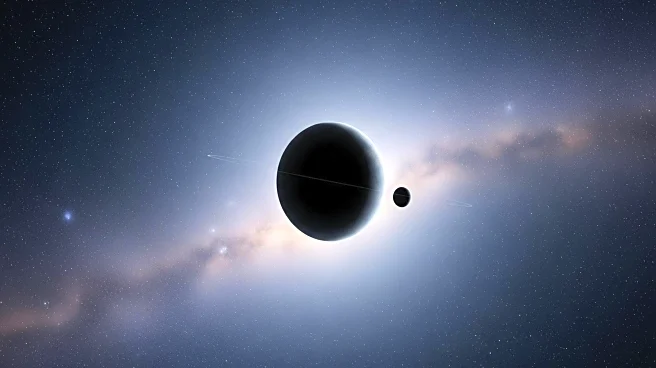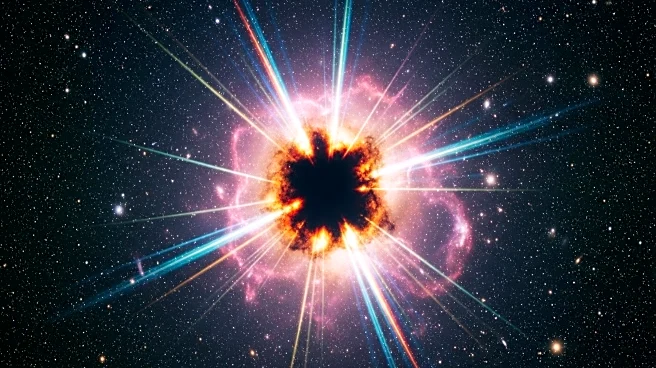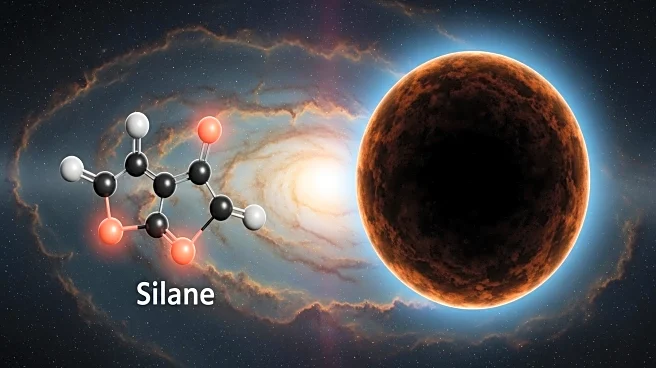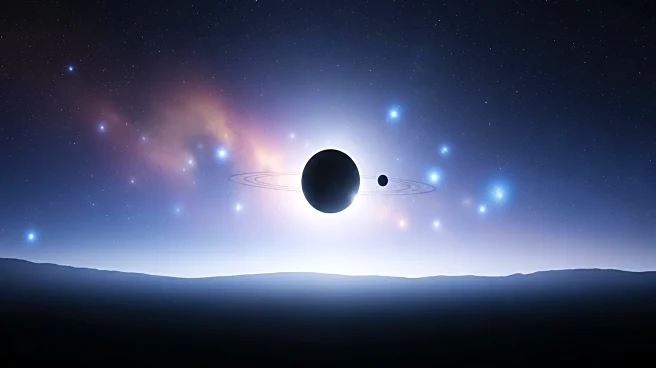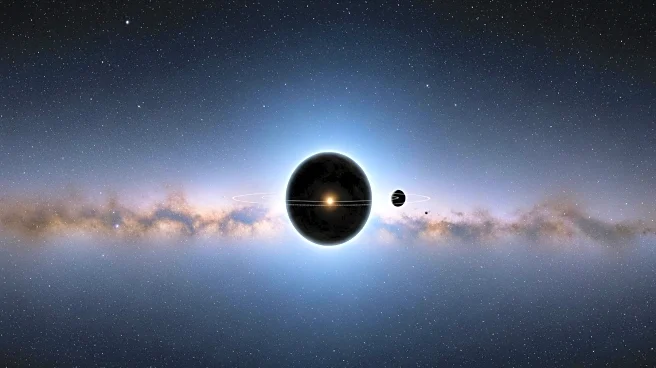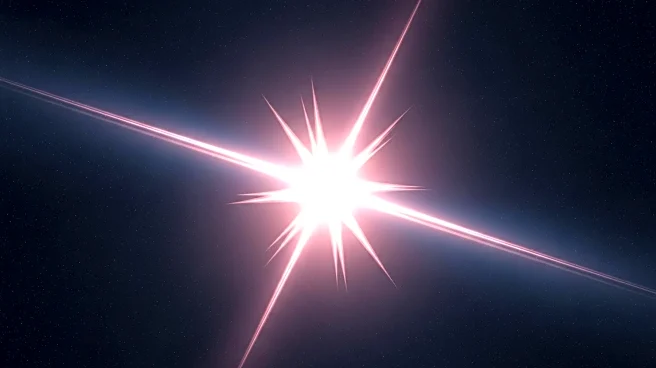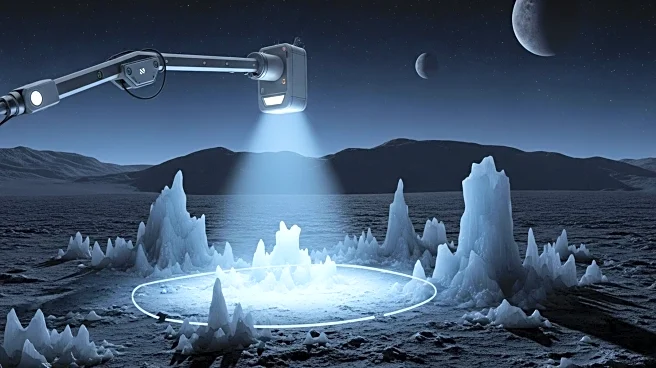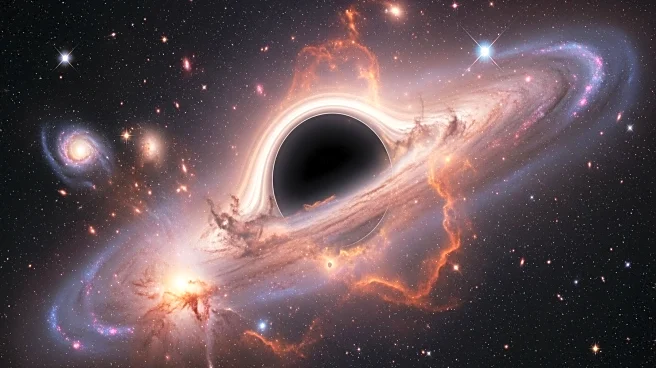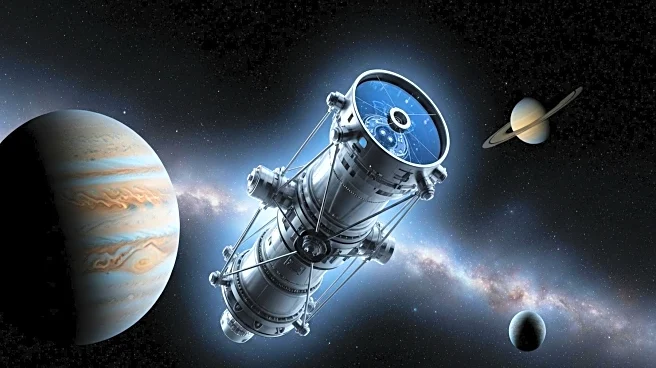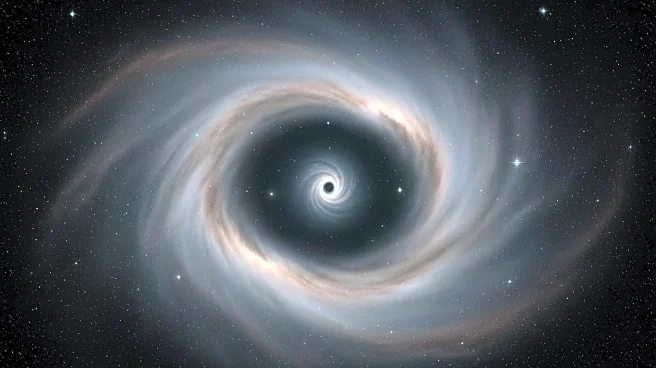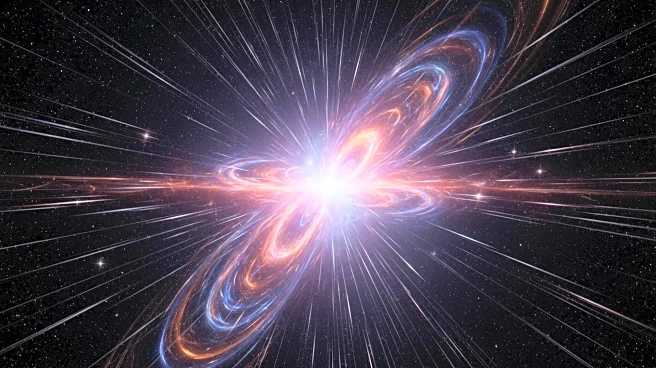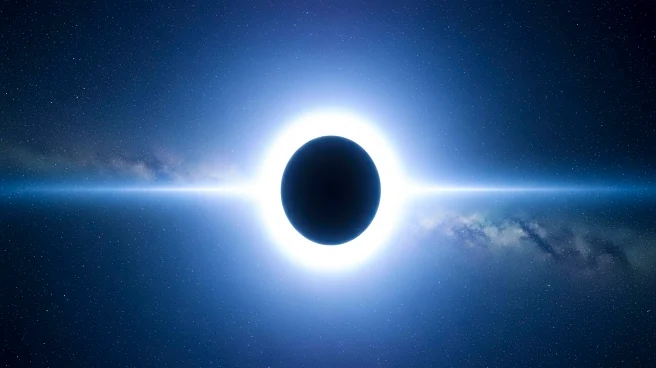What is the story about?
What's Happening?
Astronomers have identified what may be a new moon orbiting Quaoar, a distant dwarf planet located in the Kuiper Belt beyond Neptune. This discovery was made during a stellar occultation event on June 25, 2025, when the object passed in front of a distant star, causing a complete blockage of starlight for 1.23 seconds. Initially, astronomers were observing Quaoar to study its known ring, Q1R, expecting a brief dimming of the star's light. However, the unexpected blockage suggested the presence of a solid object, likely a moon, rather than a faint, dusty ring. The discovery challenges existing theories about ring and moon formation, as Quaoar already has two rings and a moon named Weywot. The rings are located outside the Roche limit, where a planet's gravity typically prevents the formation of rings, making this system particularly intriguing.
Why It's Important?
The discovery of a potential new moon around Quaoar adds complexity to our understanding of planetary systems, particularly those in the Kuiper Belt. This region is known for its icy bodies and is crucial for studying the formation and evolution of planetary systems. The presence of rings outside the Roche limit and the potential new moon challenges conventional theories, suggesting that planetary systems can form in unexpected ways. This finding could lead to new insights into the dynamics of distant planetary systems and the processes that govern their formation. It also highlights the importance of continued observation and study of these remote regions, which could reveal more about the early solar system and the conditions that led to the formation of planets.
What's Next?
Further observations and imaging by the James Webb Space Telescope (JWST) are expected to confirm the nature of the newly discovered object. Researchers aim to determine whether it is indeed a moon or possibly a third ring. These observations will help clarify the structure of the Quaoar system and may uncover additional satellites or rings. The findings could prompt a reevaluation of existing models of ring and moon formation, influencing future research in planetary science. As astronomers continue to study Quaoar, they may uncover more about the processes that shape planetary systems in the cold, distant parts of the Milky Way.
Beyond the Headlines
The discovery raises questions about the formation and stability of rings and moons in planetary systems. The presence of rings outside the Roche limit suggests that gravitational forces may not be the only factor influencing their formation. This could lead to a deeper understanding of the interactions between celestial bodies and the role of other forces, such as magnetic fields or collisions, in shaping planetary systems. Additionally, the study of Quaoar and similar distant objects may provide insights into the conditions of the early solar system, offering clues about the origins of planets and the potential for life in other parts of the galaxy.
AI Generated Content
Do you find this article useful?
